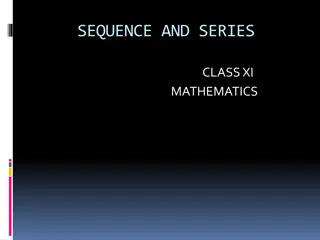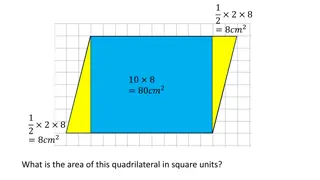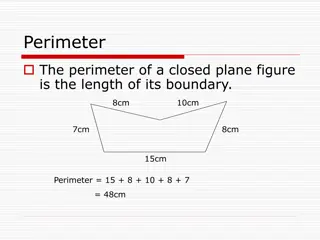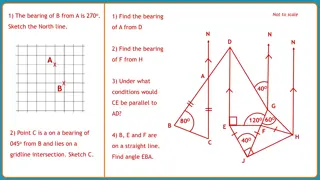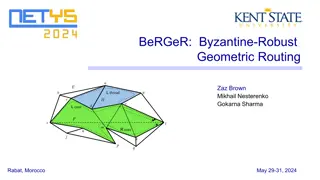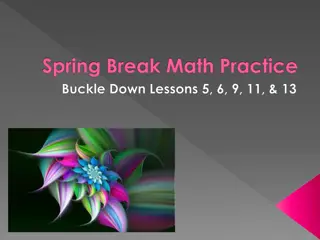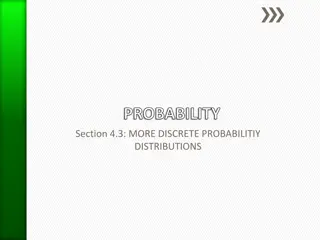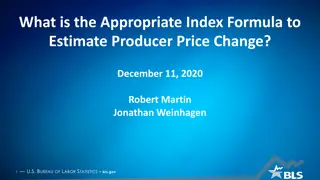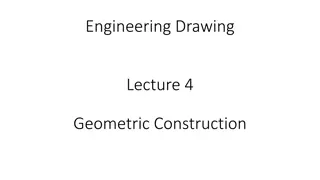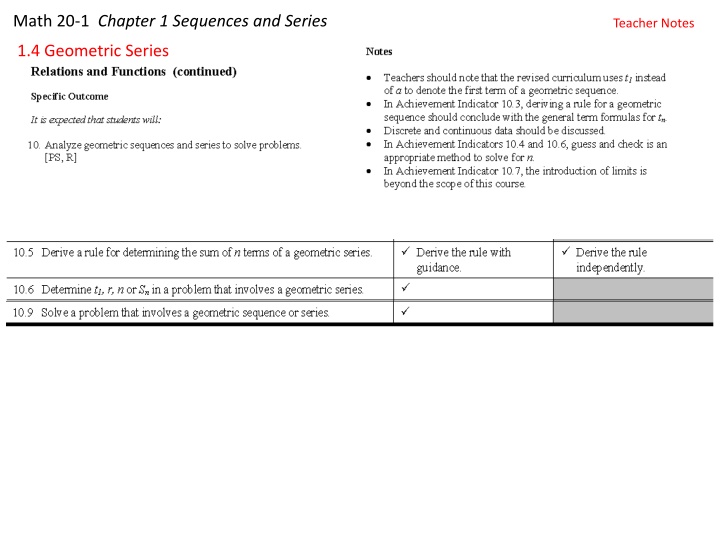
Understanding Geometric Series in Mathematics
Explore the concept of geometric series through fractal geometry, finite geometric sequences, and algebraic calculations. Learn how to calculate the sum of different series and determine the number of terms needed to achieve a desired total. Discover the beauty and complexity of patterns in mathematics.
Download Presentation

Please find below an Image/Link to download the presentation.
The content on the website is provided AS IS for your information and personal use only. It may not be sold, licensed, or shared on other websites without obtaining consent from the author. If you encounter any issues during the download, it is possible that the publisher has removed the file from their server.
You are allowed to download the files provided on this website for personal or commercial use, subject to the condition that they are used lawfully. All files are the property of their respective owners.
The content on the website is provided AS IS for your information and personal use only. It may not be sold, licensed, or shared on other websites without obtaining consent from the author.
E N D
Presentation Transcript
Math 20-1 Chapter 1 Sequences and Series Teacher Notes 1.4 Geometric Series
Math 20-1 Chapter 1 Sequences and Series 1.4 Geometric Series Fractal geometry is the geometry of nature. A fractal is a geometric figure that is generated by starting with a very simple pattern and repeating that pattern over and over an infinite number of times. A fractal usually contains small copies of itself buried within the original. 1.4.1
An old adage tells us "Character is what you do when no one is watching." Cybercitizenship", "cyber ethics", and "netiquette" refer to responsible cyber social behavior. These terms refer to what people do online when no one else is looking. Fractal Tree 1 2 4 8 What type of sequence is formed by the number of new branches? How could you determine the total number of branches? Would this be a suitable strategy for 200 stages? 1.4.2
Finite Geometric Series A finite geometric series is the expression for the sum of the terms of a finite geometric sequence. 2,6,18,54 is a geometric sequence 2 6 18 54 + + + is a geometric series The General formula for the Sum of the first n terms rt t n 1( t r 1), = 1, 1 n S r = 1 S r n 1 r n 1 r Known Values are: Known Values are: t1 r n t1 r tn Why is there a restriction on the value of r? 1.4.3
Calculate the sum of the series 5 + 15 + 45 + . . . + 10 935. rt t n 1( t r 1), 1 = 5 3 ? 10 935 t1 = r = n = tn = 1, 1 n S r = 1 S r n 1 r n r 3(10935) 5 3 1 = n S ( ) PEMDAS Sn= 16 400 The sum of the finite geometric series is 16 400. 1.4.4
Finite Geometric Series Algebraically determine the sum of the first seven terms of the series 27 + 9 + 3 + . . .. rt t n 1( t r 1), 1 = 27 1/3 7 ? t1 = r = n = tn = 1, 1 n S r = 1 S r n 1 r n r 7 1 3 27 1 = S 7 1 3 1 The sum of the first seven terms is 1093 27 S = 7 1093 27 or approximately 40.5. 1.4.5
Finite Geometric Series How many terms of the series 2 + (-4) + 8 + (-16) + . . . will yield a sum of 342? rt t n 1( t r 1), 1 = 1, 1 n S r = 1 S r 2 -2 ? 342 ? t1 = r = n = Sn = tn = n 1 r n r 2[( 2) n 1] = 342 ( ) 2 1 -1026 = 2[(-2)n 1] - 513 = (-2)n - 1 -512 = (-2)n What strategy could you use to determine the value of n? (-2)9 = (-2)n 9 = n For this geometric series, nine terms must be added for a sum of 342. 1.4.6
The Bouncing Ball 1.4.7
The Bouncing Ball A ball is dropped from a height of 100 m. It has an elasticity of 40%. Calculate the total vertical distance travelled by the ball when it contacts the floor for the fifth time. The total vertical distance traveled will be the sum of the upward and the downward distances. 100 m Stotal =2S5 - 100 = 2(164.96)-100 = 229.92 t1 = r = n = 5 S5 = tn = ? 100 0.4 rt t n 1( t r 1), 1 = 1, 1 n S r = 1 S r n 1 r n r 5 100 (0.4) 0.4 1 1 ? = S The total vertical distance travelled is 229.92 m. ( ) 5 S5 = 164.96 1.4.8
Determining the First Term from a Series The common ratio of a geometric series is and the sum of the first 4 terms is 1275. What is the value of the first term? ? 1/4 4 1275 ? t1 = r = n = S4 = tn = rt t n 1( t r 1), 1 = 1, 1 n S r = 1 S r n 1 r n r 4 1 4 1 4 1 t 1 = 1275 1 t 1 256 256 1 256 = 1275 3 4 = t 960 3825 4 255 256 t = 1 1 1.4.9
Page 53: 1, 2a, 3a, 4a,d, 5a, 6, 9, 10, 14, 19 1.4.10




